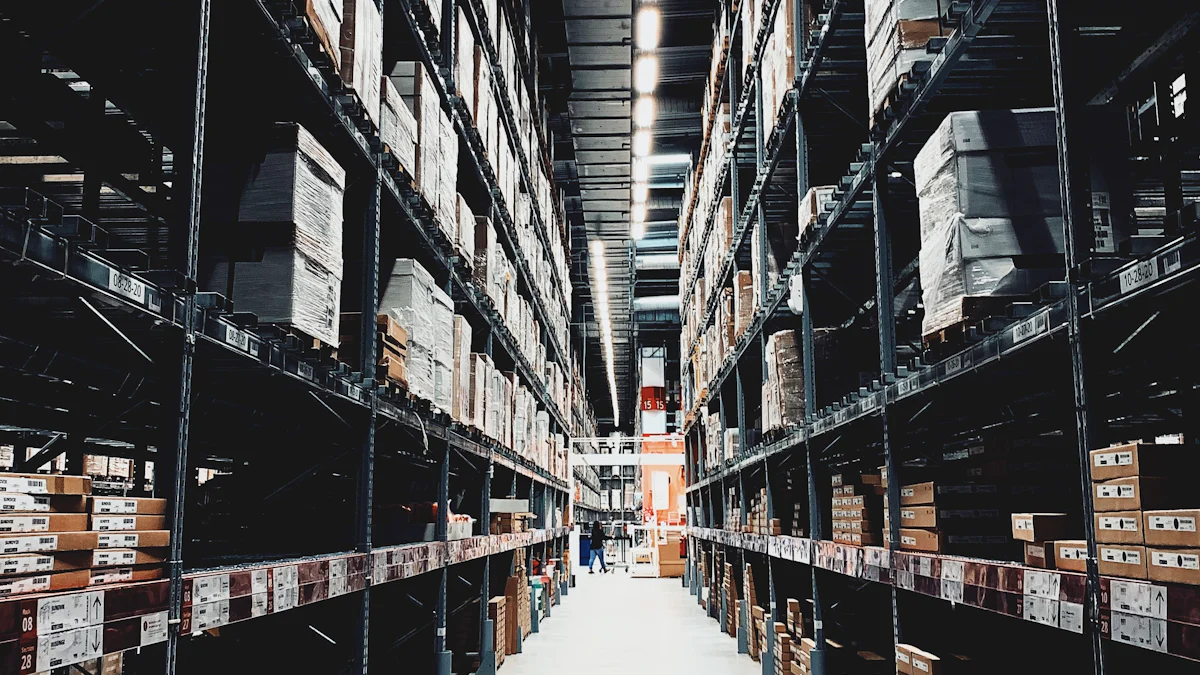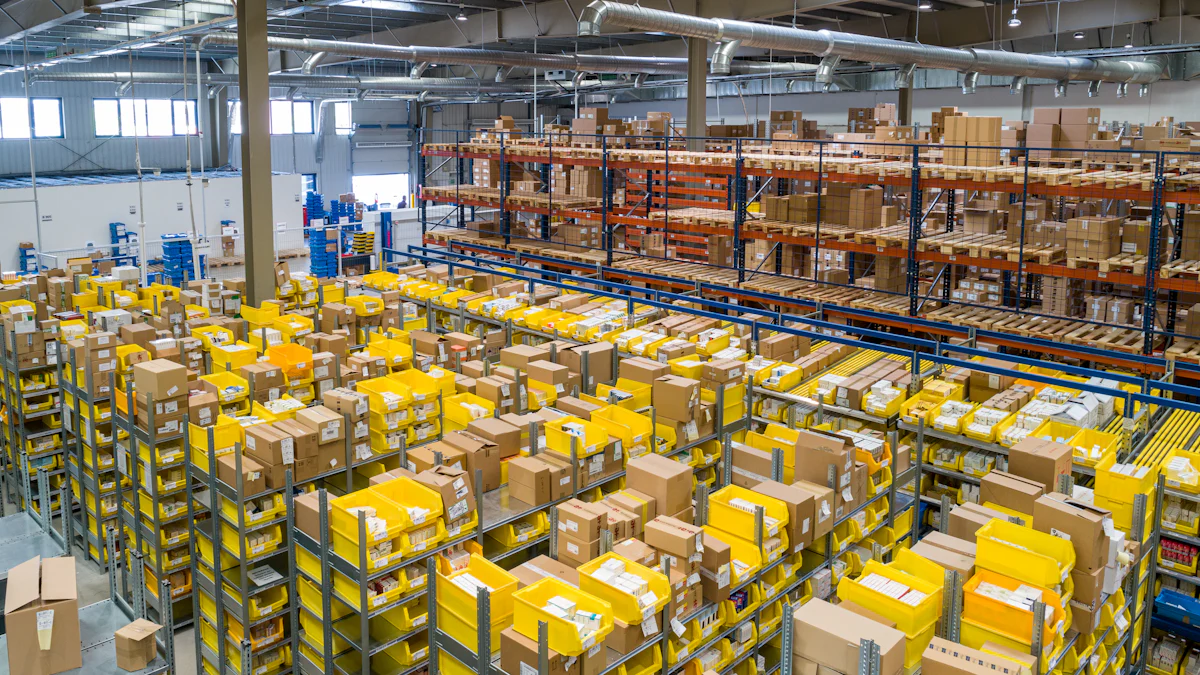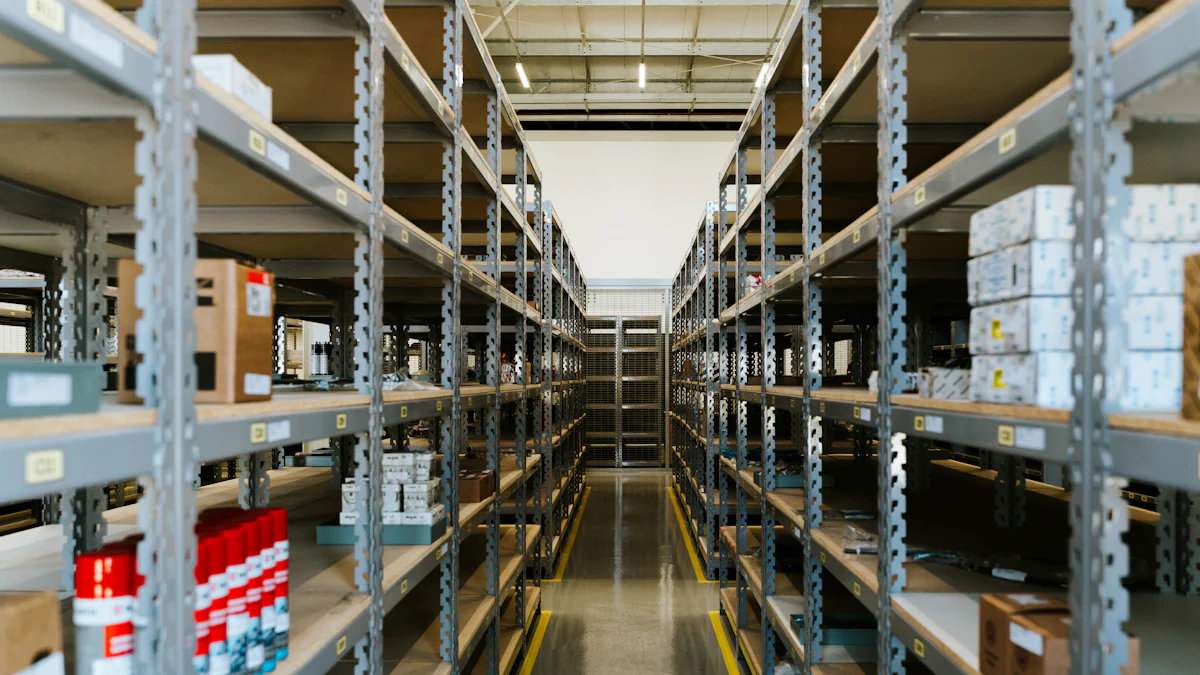Effective Strategies for Reducing Logistics Costs

Reducing logistics costs plays a vital role in boosting your business profitability. Logistics expenses often account for 5% to 35% of revenue, making them a significant factor in financial performance. You can adopt innovative solutions like telematics for route optimization or IoT sensors to monitor cargo conditions. These technologies enhance efficiency while minimizing costs. Additionally, tools such as SAP streamline logistics processes, ensuring better expense management. Optimizing last-mile delivery through route planning software or third-party providers further reduces costs, helping logistics companies achieve sustainable growth.
Key Takeaways
Cutting logistics costs can help your business make more money. Use ideas like better route planning and combining shipments to save money.
Use tools like live tracking and data analysis to see your supply chain better. This stops running out of stock and makes customers happier.
Think about hiring outside companies for tasks not central to your business. This saves money and lets you focus on what your business does best.
Identifying Key Cost Drivers in Logistics
Transportation Costs and Their Impact
Transportation costs form a significant portion of logistics expenses. These include the costs of moving goods from suppliers to consumers, which directly affect pricing strategies and product availability. High transportation costs can inflate product prices, reducing consumer purchasing power. Businesses often face a dilemma—either pass these costs onto customers or absorb them, which erodes profit margins.
Companies may pass these costs to consumers through higher prices.
Absorbing these costs reduces profitability, impacting growth and innovation.
To manage logistics costs effectively, you can focus on transportation cost management strategies like route optimization, shipment consolidation, and intermodal transportation. These methods help reduce transportation logistics costs while maintaining efficiency.
Warehousing and Storage Expenses
Warehousing costs include rent, utilities, and equipment maintenance. Inefficient use of storage space can lead to underutilization and increased expenses. Automation and optimized storage layouts can significantly reduce these costs. Cross-docking, where goods are directly transferred from inbound to outbound transportation, minimizes storage time and costs. By implementing these practices, logistics companies can improve their logistics cost management.
Labor and Workforce Costs
Labor costs are another critical driver of supply chain costs. Factors like labor shortages, wage regulations, and union actions can increase expenses. You can address these challenges by investing in automation or outsourcing non-core tasks. These strategies not only reduce costs but also improve operational efficiency.
Inventory Management Challenges
Inventory management plays a vital role in controlling supply chain costs. Businesses often struggle with maintaining optimal stock levels, leading to either stockouts or overstocking. Unreliable suppliers and inconsistent processes further complicate inventory management. By adopting demand forecasting and just-in-time inventory practices, you can minimize these challenges and manage logistics costs more effectively.
Administrative and Overhead Costs
Administrative costs include expenses related to planning, coordination, and management. These costs often go unnoticed but can add up quickly. Streamlining processes and leveraging technology for real-time tracking and analytics can help reduce overhead costs. Efficient administrative practices ensure better control over overall logistics expenses.
Common Challenges Faced by Logistics Companies
Rising Fuel Prices and Transportation Costs
Fuel prices have a direct impact on transportation logistics costs. Rising diesel costs force you to reassess shipping methods to find cost-saving opportunities. Companies often face a tough choice—operate at a loss or charge higher rates to clients. Empty-cargo miles further strain trucking margins, while breakdowns and roadside assistance add to operational expenses. Rising fuel costs also disrupt global supply chains, delaying deliveries and increasing holding costs for surplus inventory. These challenges can lead to higher consumer prices, influencing buying behavior and contributing to inflation. To reduce transportation costs, you must explore alternative shipping methods and optimize fuel usage.
Inefficient Route Planning and Delivery Delays
Poor route planning increases fuel consumption and strains your budget. Suboptimal paths result in longer travel distances, accelerating vehicle wear and tear. This leads to higher maintenance costs and more time spent on the road. Inefficient routes also delay deliveries, frustrating customers and risking loyalty. Every extra mile wastes fuel and raises labor costs, reducing profitability. Effective route optimization tools can help you address these inefficiencies, ensuring timely deliveries and improved customer satisfaction.
Underutilized Warehouse Space
Underutilized warehouse space increases storage costs and reduces efficiency. Empty or poorly organized spaces lead to higher rent and utility expenses. You can address this by implementing smart storage solutions like vertical stacking or cross-docking. These methods maximize space usage and minimize storage time, helping you cut costs and improve operational efficiency.
Labor Shortages and High Turnover Rates
Labor shortages create significant challenges in logistics. You can consider hiring contractors or lowering hiring requirements to widen the candidate pool. Targeting veterans and trade school graduates can also attract diverse talent. Streamlining the hiring process and offering perks like weekend pay boosts can make your company more appealing. Investing in employee training and development is equally important. Workers value opportunities for growth, and training programs help bridge knowledge gaps while improving workforce capabilities.
Lack of Visibility in Supply Chain Operations
Limited visibility in supply chain operations leads to inefficiencies. Poor inventory management causes stockouts or excess stock, increasing costs. Ineffective communication results in delays and errors, driving up operational expenses. Without real-time data, decision-making becomes difficult, complicating optimization efforts. A unified view of operations can help you identify inefficiencies and improve profitability. Leveraging technology for real-time tracking and analytics ensures better control over your supply chain.
Actionable Strategies to Reduce Logistics Costs

Optimize Transportation Routes to Reduce Transportation Costs
Efficient route optimization is essential for reducing transportation costs. You can identify the most effective paths by analyzing traffic patterns and avoiding delays. Tools like GPS tracking provide real-time data, helping you adjust routes dynamically. Scheduling optimization ensures timely deliveries, while cargo optimization maximizes space utilization. For example:
Use multi-warehouse systems to reduce shipping distances.
Consolidate shipments to save fuel and administrative costs.
Leverage real-time tracking to monitor transport conditions.
These practices not only reduce transportation logistics costs but also improve delivery efficiency.
Consolidate Shipments for Cost Efficiency
Consolidating shipments allows you to achieve economies of scale. By combining smaller loads into larger ones, you reduce the cost per unit shipped. This strategy also minimizes the number of trips, lowering fuel expenses and carbon emissions. Additionally, fewer stops enhance cargo security and streamline operations. Businesses that consolidate shipments often gain increased bargaining power, enabling them to negotiate better rates with carriers.
Leverage Technology for Real-Time Tracking and Analytics
Real-time tracking technology enhances supply chain visibility. RFID tags and IoT sensors provide instant updates on inventory levels and shipment locations. This visibility helps you avoid stockouts and overstock situations, ensuring optimal inventory management. Real-time data also improves customer satisfaction by enabling interactive delivery scheduling. These tools streamline operations and contribute to significant cost savings.
Outsource Non-Core Logistics Functions
Outsourcing to a 3PL provider can reduce logistics costs by leveraging their expertise and resources. Third-party logistics companies negotiate better transportation rates and lower IT expenses. By outsourcing, you can focus on core business activities while benefiting from streamlined operations and reduced overhead costs. Partnering with a 3PL ensures access to advanced technology and specialized logistics management.
Leveraging JUSDA’s Solutions to Reduce Supply Chain Costs
How JUSDA’s China-Europe Express Rail Reduces Transportation Costs
The China-Europe Express Rail offers a cost-effective and efficient solution for businesses transporting goods between China and Europe. This service bridges the gap between speed and affordability, delivering goods in 15-20 days. It provides a faster alternative to sea freight and a more economical option compared to air freight. By leveraging this rail service, you can reduce supply chain costs significantly while maintaining delivery timelines. The rail network also supports a wide range of goods, including electronics, clothing, and medical supplies. JUSDA’s expertise ensures smooth customs operations, minimizing delays and enhancing overall efficiency. This solution helps you optimize transportation logistics and reduce logistics costs effectively.
JusLink Intelligent Supply Chain for Real-Time Visibility
JusLink Intelligent Supply Chain enhances visibility across your supply chain operations. Its advanced features provide real-time updates, predictive analytics, and end-to-end management. These capabilities allow you to monitor shipments, predict potential issues, and make informed decisions. The platform integrates main and value-added products, offering tailored services to meet your specific needs. Below is a table summarizing its key features and benefits:
Feature | Benefit |
|---|---|
End-to-end visual management | Provides complete control over global supply chains |
Real-Time Updates | Reduces communication and supply chain costs |
Big Data Analysis | Predicts and resolves issues early, opening new product opportunities |
One-Stop Solutions | Integrates main and value-added products, offering customized services |
By adopting JusLink, you can reduce supply chain costs, improve logistics cost management, and enhance operational efficiency.
Industry-Specific Solutions for Cost Optimization
JUSDA offers tailored solutions for various industries, addressing their unique challenges. For electronics, JUSDA provides specialized logistics solutions for high-value goods, ensuring secure and efficient delivery. Automotive clients benefit from customized services designed to meet specific requirements, enhancing customer satisfaction. In the medical equipment sector, JUSDA focuses on compliance and timely delivery, reducing supply chain costs while maintaining quality. JusLink’s cloud-based digital solutions further streamline operations by connecting upstream and downstream partners, improving efficiency and reducing costs. These industry-specific solutions empower you to achieve cost optimization and operational excellence.
Case Studies: Successful Cost Reduction in Logistics

Example 1: Route Optimization Leading to Fuel Savings
Route optimization can significantly reduce transportation costs and improve fleet efficiency. Quality Custom Distribution, a division of Golden State Foods, implemented a route optimization platform to enhance operations. This initiative, known as the "digital route transformation journey," reduced driver fatigue and improved overall fleet performance. By identifying the most efficient routes, businesses save fuel and reduce vehicle wear and tear. These savings directly impact logistics cost management, helping companies allocate resources more effectively.
Example 2: Warehouse Automation Reducing Labor Costs
Automation in warehouses has transformed logistics operations by reducing labor dependency. Conveyor systems and robotics streamline processes, cutting costs and improving order turnaround times.
A client facing a 14-day backlog due to labor shortages implemented conveyor systems and goods-to-person picking. This change reduced labor costs by 30-35%, enabling them to meet order volumes in a single shift.
A 2018 survey revealed that 55% of respondents identified labor shortages as a major warehouse management issue.
The 2018 State of Logistics Report highlighted how automation addresses labor shortages and high turnover, improving productivity and controlling costs.
These examples show how automation enhances efficiency and reduces operational costs.
Example 3: JUSDA’s China-Europe Express Rail Enhancing Supply Chain Efficiency
JUSDA’s China-Europe Express Rail demonstrates how innovative solutions optimize supply chain operations. This service balances speed and cost, delivering goods in 15-20 days. It offers a faster alternative to sea freight and a more affordable option than air freight. Businesses transporting electronics, clothing, or medical supplies benefit from reduced costs and improved delivery timelines. JUSDA’s expertise ensures smooth customs operations, minimizing delays and enhancing efficiency. This solution exemplifies how logistics optimization can drive cost savings and operational excellence.

JUSDA Solutions
To provide you with professional solutions and quotations.
Reducing logistics costs is essential for long-term business success. Lowering these costs improves margins, enhances competitiveness, and supports reinvestment into innovation. Strategies like route optimization, warehouse automation, and real-time tracking streamline operations and boost efficiency. Adopting solutions like JUSDA’s China-Europe Express Rail or JusLink ensures measurable outcomes, including improved customer satisfaction and operational responsiveness.
📊 Tracking metrics such as cost per unit produced, inventory turnover ratio, and gross profit margin helps evaluate the success of cost-reduction strategies. These insights guide continuous improvement and ensure sustainable growth.
By leveraging advanced tools and tailored solutions, you can optimize logistics operations, reduce logistics costs, and achieve long-term profitability.
See Also
Mastering Cost Reduction Strategies For Logistics Efficiency
Unlocking Hidden Savings: Expert Tips For Logistics Success
Understanding Supply Chain Economics For Cost Reduction
Discover Five Creative Techniques For Supply Chain Improvement
Essential Strategies For Effective Supply Chain Optimization
